MONOMORPHIC SURFACES (or what I listen for when I listen in Men’s bathrooms)
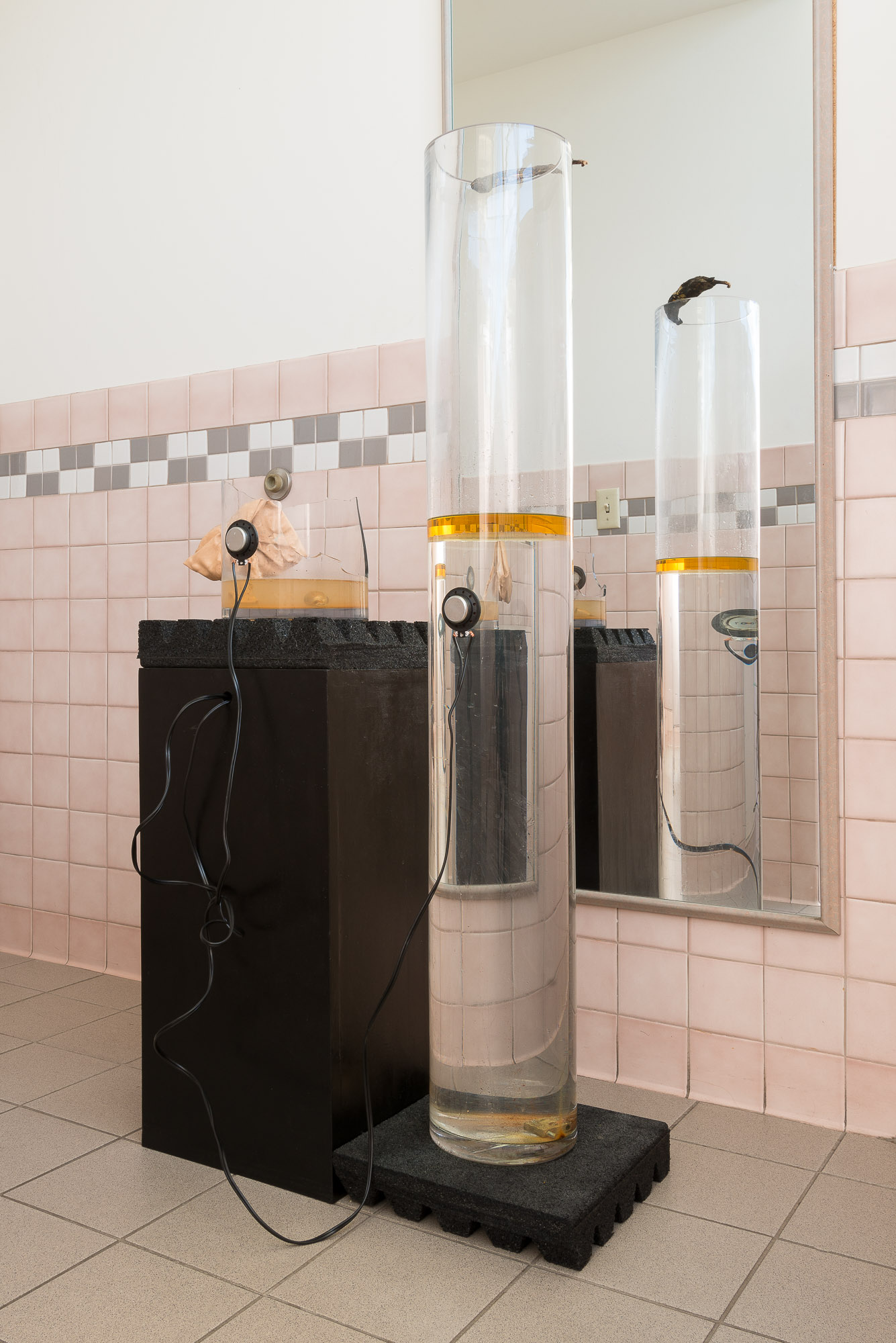


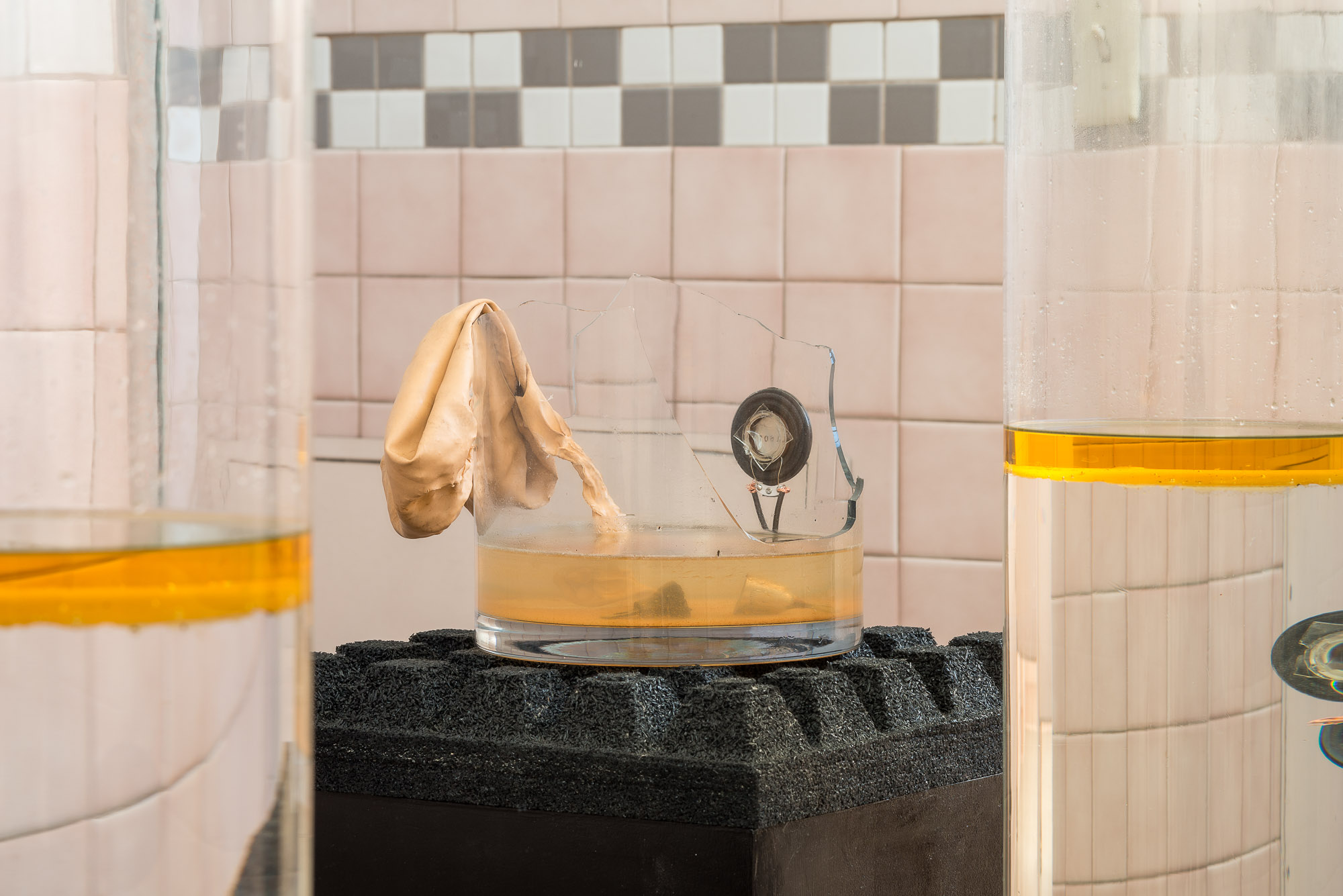
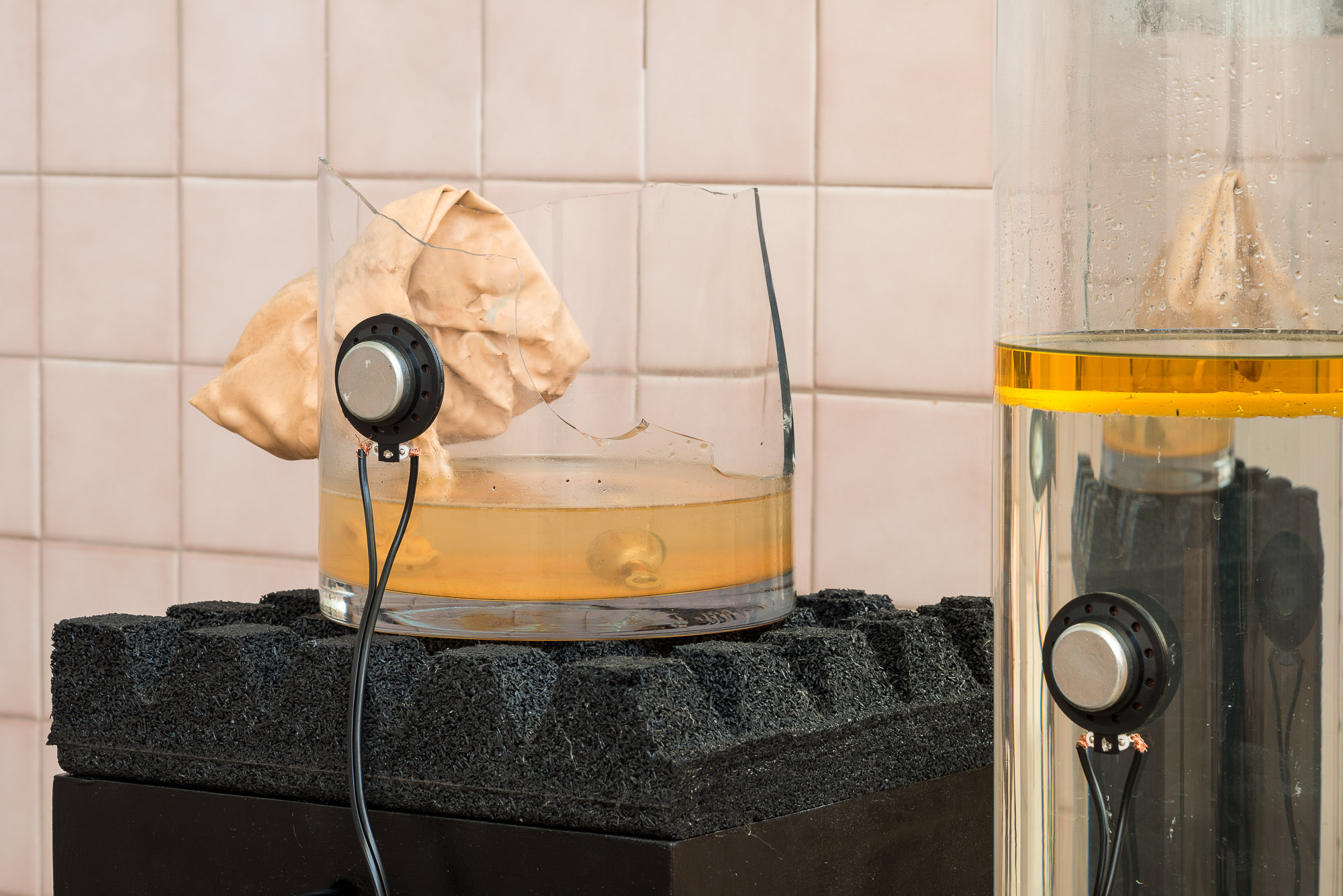
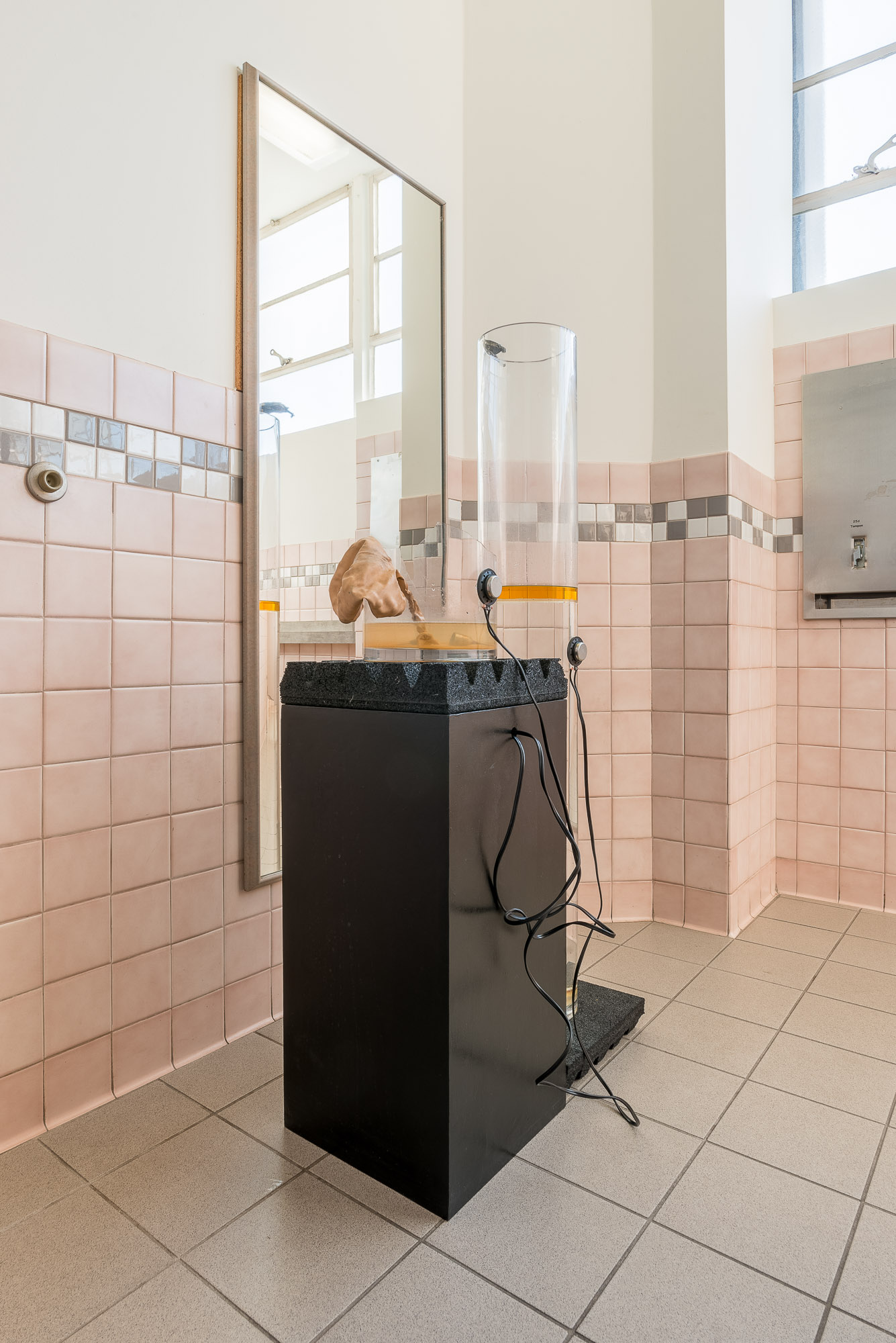
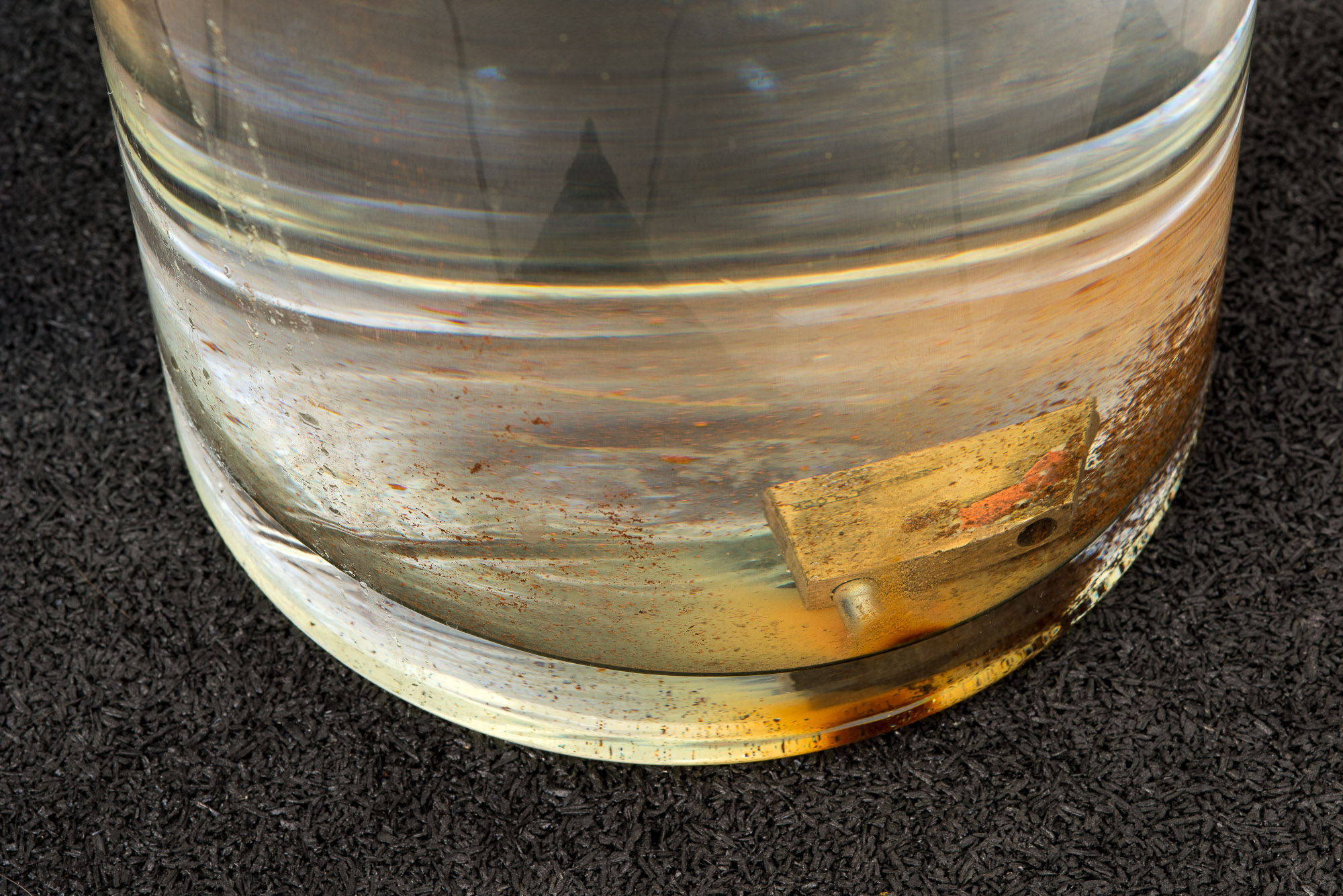

Salt water
Cooking oil
A desiccated banana
A balloon
Water beads
Two brass bells
Recording of piss going into a pot
This vessel is accompanied by another that has been broken.
Jules Gimbrone is an artist and composer that asks how social performance is codified, captured, and transmitted. Using a variety of recording and amplifying technologies—in addition to materials such as clay, ice, and the ambient sound of past performances—Gimbrone investigates how sound travels through space, bodies, and language as a way of exploring hidden or sublimated gendered systems.For Monomorphic Surfaces (or what I listen for when I listen in Men’s bathrooms), the artist considers the differences between male and female anatomy. As a transgender or non binary person, Gimbrone cites the bathroom as a particular space where thoughts and projections regarding these differences, specifically the difference of genitalia, become emphasized in a way that is not felt elsewhere. The concept of biopolitics articulates that these differences, and the materiality of sex in general, are constructs of political and social power structures that attempt to enforce authority over bodies by constricting them to assigned categories, such as gender and sex.*Gimbrone’s vessels exist beyond the confines of their glass walls and continue in the form of their audio hitting our ears and tissues; their conceptual, political, visual, and auditory interpretations; and an infinite number of manifestations as is the case with all bodies. Constructing a piece that purposefully transcends its materiality while also utilizing the sound of urination, one that is homogenous between both gendered restrooms, Gimbrone has created a body that gently eliminates corporeal boundary lines.